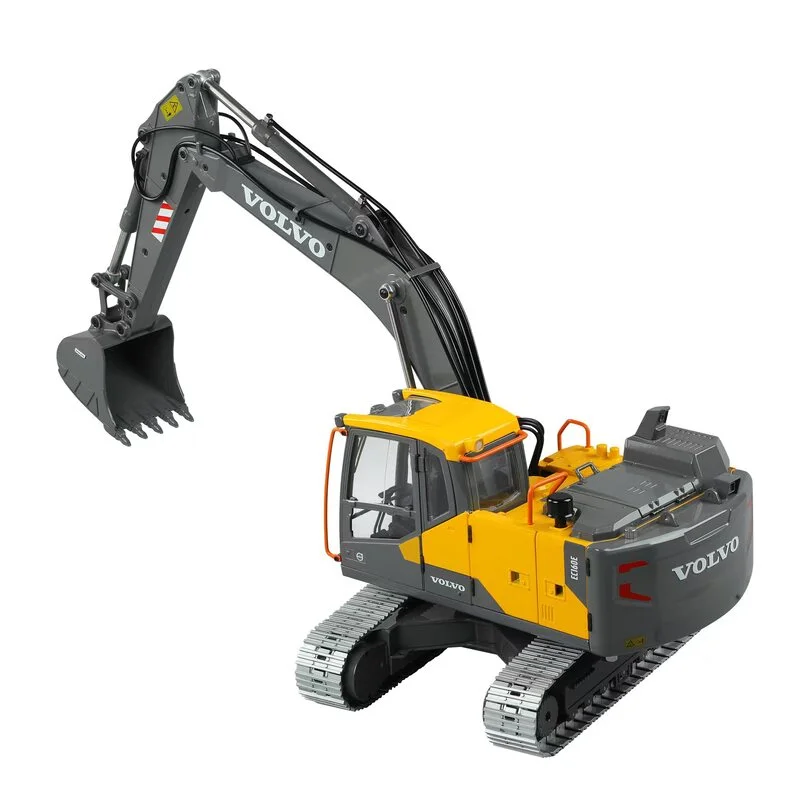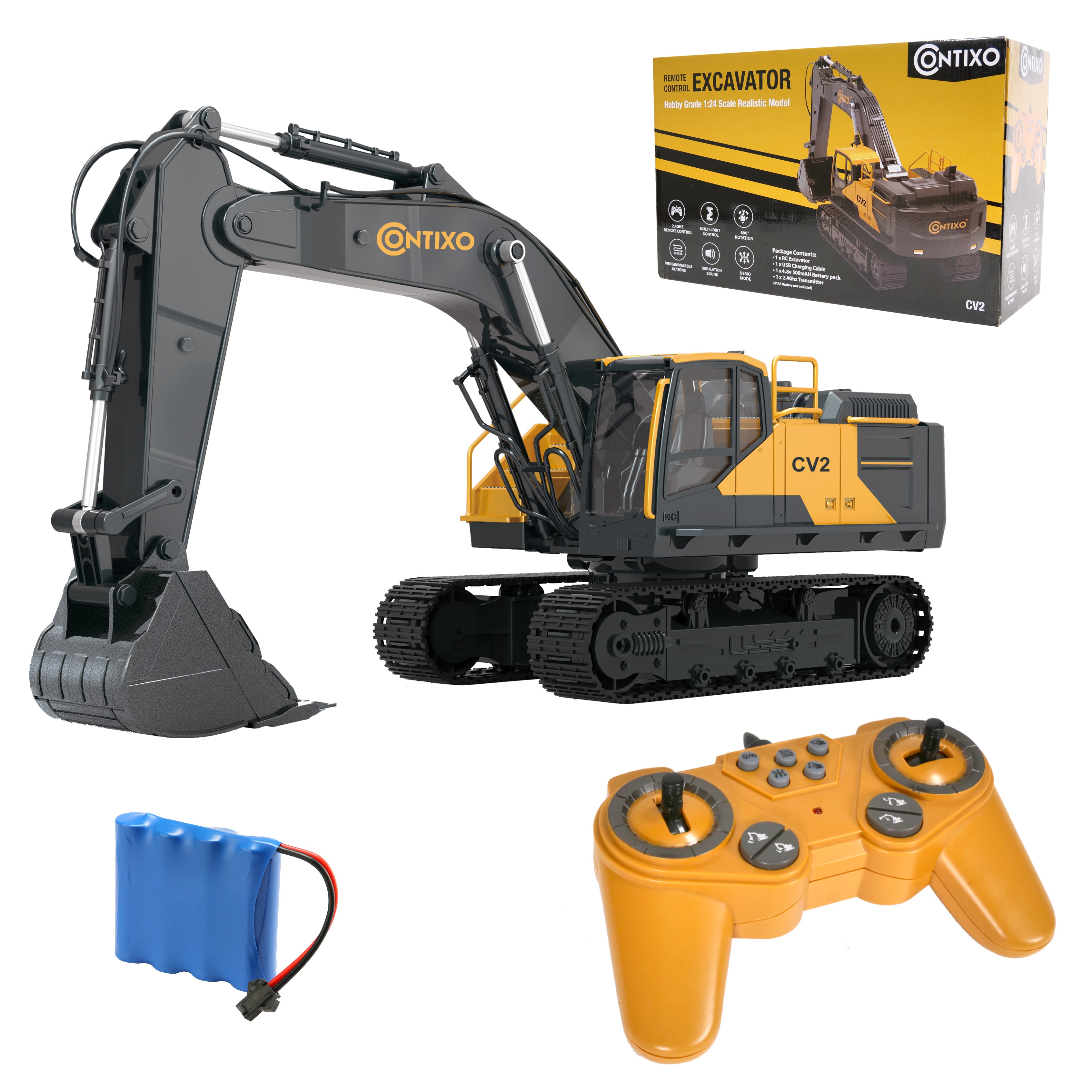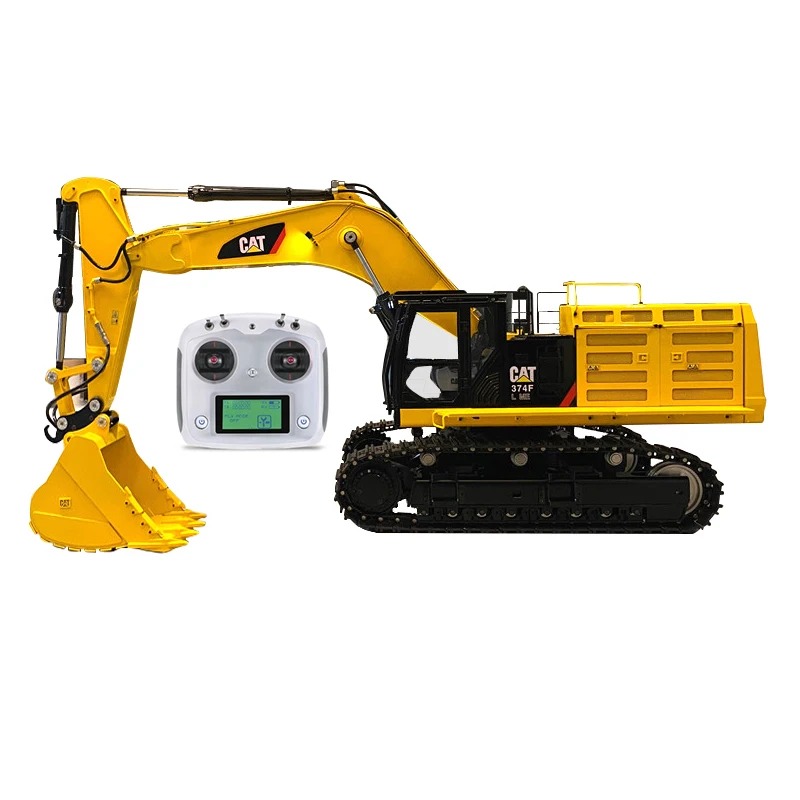Why the remote control excavator Is a Revolution in Modern Construction
Wiki Article
The Crucial Features of Excavator That Make Things a Must-Have Device
Excavators are crucial in the building and landscape design industries. Their flexible attachments enable a range of jobs, from excavating to demolition. In addition, they flaunt remarkable excavating deepness and reach, powered by robust engines. Driver convenience and compact layouts boost use in various environments. However, what really sets excavators apart are their innovative hydraulic systems and sturdiness. Understanding these functions can make clear why they are taken into consideration important tools on any type of task site.Versatile Add-ons for Boosted Capability
Excavators are powerful machines on their very own, the addition of flexible attachments considerably boosts their capability. These add-ons change a typical excavator into a multi-purpose tool, appropriate for a variety of jobs. Buckets, for instance, can be found in different forms and sizes, enabling operators to dig, scoop, and move materials efficiently. Hydraulic thumbs can be added for improved gripping and handling of large items, such as logs or rocks.Furthermore, specialized attachments like augers and breakers enable boring and demolition work, expanding the excavator's utility on building and construction websites. remote control excavator. Grapples are one more choice, perfect for relocating and arranging particles. This flexibility not just enhances performance but also minimizes the need for several machines, conserving time and prices. By furnishing excavators with the best accessories, drivers can tackle diverse tasks, making them crucial in the construction sectorSuperior Digging Deepness and Get To
Excavators are made with remarkable digging depth and reach, permitting them to steer in tight areas and access hard-to-reach locations. This capability is vital for various construction and excavation projects, where traditional machinery may drop short. With flexible boom arms and extendable tracks, excavators can easily browse uneven terrain while maintaining stability.The digging depth can differ significantly amongst versions, often ranging from 10 to 25 feet, depending on the design and function. This attribute makes it possible for operators to excavate structures, trenches, and various other deep structures efficiently. Furthermore, the reach of an excavator permits for precise digging and product handling without rearranging the maker often, conserving time and labor costs.Ultimately, the superior digging depth and reach of excavators make them important for specialists looking for to complete intricate jobs with precision and effectiveness. Their versatility boosts performance on job websites, showcasing them as an essential tool in modern-day construction.Powerful Engine Performance

Effective engine efficiency plays a critical role in the abilities of an excavator when it comes to performance and productivity on building and construction sites. A durable engine produces significant horse power, enabling the equipment to tackle durable tasks easily - remote control excavator. This toughness converts into faster cycle times, making it possible for operators to total jobs a lot more quickly.Additionally, powerful engines provide the required torque to handle challenging terrains and differed loads, making sure that the excavator can carry out efficiently under various conditions. Whether it is raising, digging, or relocating materials, the engine's performance directly influences the overall operational efficiency of the machine.Furthermore, advancements in engine technology have led to improved gas effectiveness, lowering functional expenses while maintaining power result. Eventually, the engine's performance works as the foundation of an excavator, verifying its condition as an essential device in the construction market
Advanced Hydraulic Equipments

Improved Lifting Capacity
A substantial enhancement in lifting capability can be connected to innovative hydraulic systems located in modern-day excavators. These systems use high-pressure fluid to create greater force, enabling operators to lift larger loads with ease. The engineering behind these hydraulics warranties peak efficiency, giving an impressive power-to-weight proportion that improves general performance. Therefore, excavators can deal with requiring tasks, such as raising large products or tools, without endangering stability. In addition, the robust style of hydraulic elements adds to raised resilience and reliability, making them ideal for various building and construction settings. This enhanced training ability not just minimizes the time needed for jobs but additionally minimizes the need for additional machinery, verifying vital for both efficiency and cost-effectiveness in the building sector.Enhanced Precision Control
Although conventional excavators commonly fought with accuracy, contemporary hydraulic systems have changed control mechanisms, enabling drivers to perform tasks with impressive precision. These innovative systems utilize proportional control valves that allow for smoother and a lot more responsive activities, considerably lowering the margin for error. Operators can currently finely tune the excavator's movements, making it much easier to browse limited rooms and handle fragile products. Boosted feedback systems even more notify operators of real-time efficiency, ensuring ideal control in between the device and driver. This enhanced accuracy not only enhances performance but likewise boosts safety and security on job websites, reducing the risk of accidents. Therefore, site here modern-day excavators geared up with advanced hydraulic systems are very useful devices for building and construction and excavation jobs needing precise accuracy.Operator Comfort and Exposure
Driver comfort and exposure are critical parts in the style of modern-day excavators (remote control excavator). Functions such as ergonomic seat design, boosted presence alternatives, and reliable control designs substantially boost the driver's experience and performance. Prioritizing these aspects guarantees that operators can work properly and safely in different problemsErgonomic Seat Style
Comfort and exposure are extremely important in excavator style, with the ergonomic seat playing a crucial role in improving the operator's experience. An ergonomic seat is crafted to support the driver's body, decreasing exhaustion throughout long hours of procedure. Adjustable attributes, such as seat elevation, backrest angle, and back assistance, satisfy specific preferences and advertise ideal posture. These changes enhance convenience and enable the driver to maintain concentrate on jobs without discomfort. In click this link addition, a well-designed seat can provide better lateral assistance, enabling for smoother maneuvering when the excavator functions. This thoughtful style not only boosts performance yet likewise adds to overall security, making certain that drivers can perform their duties properly and efficiently.Enhanced Exposure Features
The design of an excavator expands beyond simply the seat, with improved presence attributes playing a significant role in operator comfort and general security. Huge windows and tactically located mirrors give drivers with a clear view of their surroundings, decreasing blind places. This layout factor to consider permits for better spatial awareness, which is necessary in active workplace. Furthermore, several excavators include rearview electronic cameras and progressed tracking systems that assist operators in steering tight areas. The combination of these presence includes not just promotes safety but also lowers driver exhaustion by allowing less complicated tracking of work locations. Ultimately, enhanced exposure adds to a lot more reliable procedures and aids ensure that excavators can do their tasks properly and securely.Control Format Performance
While handling facility work sites, an effective control design significantly enhances both driver convenience and exposure. A properly designed control configuration assurances that drivers can access necessary features with marginal effort, decreasing exhaustion during long hours. Ergonomic joystick positionings and instinctive button setups enable seamless operation, making it possible for operators to keep focus on the task handy. Additionally, clear exposure of both the workspace and the control panel is vital for safety and security and precision. Modern excavators typically incorporate flexible seating and control setups to suit various driver choices, better enhancing convenience. Ultimately, an attentively developed control design not only enhances efficiency but additionally cultivates a much safer working environment by permitting operators to respond quickly to changing conditions.Compact Design for Urban Environments
As metropolitan construction websites often face space restrictions, a compact design ends up being essential for excavators operating in these atmospheres. These equipments are crafted to navigate tight spaces, enabling efficient ability to move in crowded task websites. A minimized footprint allows them to work very closely to existing frameworks, minimizing disruption and maximizing productivity.The portable layout commonly consists of much shorter tracks and a tighter transforming span, promoting operation in narrow streets and constrained locations. Lightweight products contribute to ease of transport, making it less complex to move the excavator from one location to an additional within the urban landscape.Additionally, many compact excavators are geared up with features such as extendable arms and flexible attachments, improving their functionality while keeping a tiny size. This flexibility permits drivers to tackle a range of tasks, from digging to demolition, all while fitting flawlessly right into the restrictions of city settings.
Resilience and Maintenance Considerations
Toughness stands as an essential factor in the performance and longevity of excavators, especially popular urban settings. These makers go through rigorous problems, including differing soil kinds, severe temperatures, and high-frequency use. Top quality products and durable construction are necessary for making certain that excavators can stand up to these challenges without compromising functionality.Regular maintenance is just as vital in protecting resilience. Set up examinations, prompt oil modifications, and the replacement of worn parts contribute significantly to an excavator's life expectancy. Operators has to likewise pay interest to hydraulic systems, tracks, and undercarriages, as these parts usually birth the burden of wear and tear.Investing in resilient excavators with substantial upkeep plans boosts integrity and reduces downtime, inevitably causing boosted productivity on building and construction sites. For that reason, recognizing the interplay site here between sturdiness and maintenance is essential for anybody taking into consideration the procurement of an excavator for urban jobs.Often Asked Questions
Just How Do Excavators Compare to Various Other Building And Construction Tools?
Excavators attract attention amongst building and construction equipment because of their convenience, making it possible for tasks such as excavating, grading, and training. Compared to others, their hydraulic abilities use greater efficiency and power, making them vital on various task websites.What Safety And Security Includes Are Consisted Of in Modern Excavators?
Modern excavators incorporate different safety features, including rollover security systems, alarm systems, and progressed exposure enhancements. These elements interact to reduce dangers, guaranteeing operator security while improving performance on building sites and various other requiring settings.
Can Excavators Be Made Use Of in Winter Months Issues?
Excavators can without a doubt be utilized in winter months problems, supplied they are furnished with appropriate winter attachments and safety measures are taken. Appropriate upkeep and changes improve their performance, making sure effective operation despite tough weather condition conditions.What Is the Typical Lifespan of an Excavator?
The typical life expectancy of an excavator generally ranges from 7,000 to 10,000 hours of operation. This duration can significantly depend on maintenance methods, running problems, and the specific model's toughness and layout functions.Just how Do I Select the Right Excavator Dimension for My Project?
Choosing the right excavator dimension includes reviewing job extent, website problems, and material types. Consider aspects like reach, deepness demands, and weight ability to assure maximum efficiency and safety and security throughout operation. Dimension issues considerably in project success. In addition, the reach of an excavator allows for specific digging and product handling without repositioning the equipment frequently, saving time and labor costs.Ultimately, the premium excavating depth and reach of excavators make them important for specialists looking for to finish intricate jobs with precision and effectiveness. Comfort and visibility are paramount in excavator layout, with the ergonomic seat playing an essential function in improving the operator's experience. The design of an excavator expands past simply the seat, with boosted exposure features playing a significant function in operator convenience and overall safety and security. Modern excavators often integrate flexible seats and control settings to fit different driver preferences, better enhancing comfort. Lightweight products contribute to relieve of transportation, making it easier to move the excavator from one location to one more within the city landscape.Additionally, lots of portable excavators are equipped with features such as extendable arms and flexible add-ons, improving their functionality while maintaining a small size.Report this wiki page